 W
WTransport economics is a branch of economics founded in 1959 by American economist John R. Meyer that deals with the allocation of resources within the transport sector. It has strong links to civil engineering. Transport economics differs from some other branches of economics in that the assumption of a spaceless, instantaneous economy does not hold. People and goods flow over networks at certain speeds. Demands peak. Advance ticket purchase is often induced by lower fares. The networks themselves may or may not be competitive. A single trip may require the bundling of services provided by several firms, agencies and modes.
 W
WIn the airline industry available seat miles (ASM) or available seat kilometers (ASK) is a measure of passenger carrying capacity. It is equal to the number of seats available multiplied by the number of miles or kilometers flown. An available seat mile is the fundamental unit of production for a passenger-carrying airline. A unit in this case is one seat, available for sale, flown one mile. For example, an aircraft with 300 seats available for sale flying 1,000 statute miles would generate 300,000 ASMs for that particular flight. That the seats are available for sale is critical. An aircraft that had 300 seats but which was limited to selling only 250 of them on a particular flight of 1,000 miles would generate 250,000 ASMs on that flight, not 300,000. Similarly, if passenger seats on a particular flight are dedicated to crew rest purposes, such seats would not be included in the calculation of ASMs for that flight.
 W
WAviation taxation and subsidies includes taxes and subsidies related to aviation.
 W
WThe Transportation Expansion (T-REX) Project was a $1.67 billion venture that had a goal of transforming the way people in the metro Denver area commute within the areas of Interstates 25 and 225, then the country's 14th busiest intersection. The T-REX effort widened major interstates to as much as 7 lanes wide in each direction and added 19 miles (31 km) of double-track light rail throughout the metropolitan area. It's considered by some to be one of the most successful transportation upgrade projects in the United States. It also received a National Design-Build Award from the Design-Build Institute of America. The T-REX project finished 3.2% under its $1.67 billion budget and 22 months ahead of schedule in 2006 and is considered to be an example of inter-governmental agency cooperation for transportation projects for North America and Worldwide. Stakeholders have been recognized nationally and internationally for its success, including quality management.
 W
WCongestion pricing or congestion charges is a system of surcharging users of public goods that are subject to congestion through excess demand, such as through higher peak charges for use of bus services, electricity, metros, railways, telephones, and road pricing to reduce traffic congestion; airlines and shipping companies may be charged higher fees for slots at airports and through canals at busy times. Advocates claim this pricing strategy regulates demand, making it possible to manage congestion without increasing supply.
 W
WThe Crow Rate, or Crowsnest Freight Rate, was a rail transportation subsidy benefiting farmers on the Canadian Prairies and manufacturers in Central Canada by rate requirements imposed on the Canadian Pacific Railway (CPR) by the Government of Canada in exchange for financing and other benefits.
 W
WA crush load is a level of passenger loading in a transport vehicle which is so high that passengers are "crushed" against one another. It represents an extreme form of passenger loading, and normally considered to be representative of a system with serious capacity limitations. Crush loads result from too many passengers within a vehicle designed for a much smaller number. Crush loaded trains or buses are so heavily loaded that for most passengers physical contact with several other nearby passengers is impossible to avoid.
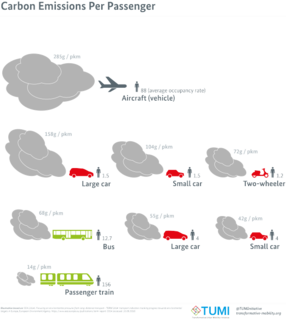 W
WEnergy-efficient driving techniques are used by drivers who wish to reduce their fuel consumption, and thus maximize fuel efficiency. The use of these techniques is called "hypermiling".
 W
WA gas-guzzler, in informal language, is a vehicle that is perceived to consume a lot of fuel.
 W
WIn transport economics, the generalised cost is the sum of the monetary and non-monetary costs of a journey.
 W
WGliding is an energy-efficient driving mode achieved by turning off the internal combustion engine while the vehicle is still moving in order to save fuel. This is differentiated from coasting, which means running the vehicle in idle mode by disengaging the engine from the wheels, either by disengaging the clutch or setting the transmission or gearbox to neutral position. Gliding and coasting use the accelerated kinetic energy reserve stored in the vehicles mass, i.e. inertia, to keep the vehicle moving. This energy, however, is being lost due to forces that resist movement, such as air-drag, rolling resistance and gravity. The functionality, being an integral concept of hybrid electric vehicles, is performed automatically by the engine controller. For vehicles with a conventional internal combustion engine, coasting can be performed manually; gliding requires having a gear box. Manual gliding or coasting is illegal in some states. An extra button to stop the engine was shown in 1979 on International Motor Show Germany, but never became a feature in mass production of any vehicle. In 1980 research was made on the IRVW II. A so-called eClutch uses an actuator to disengage the clutch when the driver releases the accelerator.
 W
WThe iceberg transport cost model is a commonly used, simple economic model of transportation costs. It relates transport costs linearly with distance, and pays these costs by extracting from the arriving volume. The model is attributed to Paul Samuelson's 1954 article in Deardorffs' Glossary of International Economics. Paul Krugman's 1991 paper on Economic Geography is one of the more widely cited papers employing the model.
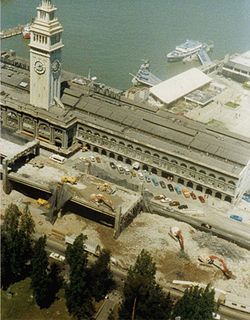 W
WInduced demand – related to latent demand and generated demand – is the phenomenon that after supply increases, and there is sufficient demand, price declines and more of a good is consumed. This is entirely consistent with the economic theory of supply and demand; however, this idea has become important in the debate over the expansion of transportation systems, and is often used as an argument against increasing roadway traffic capacity as a cure for congestion. This phenomenon, more correctly called "induced traffic" or consumption of road capacity, may be a contributing factor to urban sprawl. City planner Jeff Speck has called induced demand "the great intellectual black hole in city planning, the one professional certainty that everyone thoughtful seems to acknowledge, yet almost no one is willing to act upon."
 W
WThe Lewis–Mogridge position, named after David Lewis and Martin J. H. Mogridge, was formulated in 1990 and observes that as more roads are built, more traffic consequently fills these roads. Speed gains from some new roads can disappear within months, if not weeks. Sometimes, new roads help to reduce traffic jams, but in most cases, the congestion is only shifted to another junction.
 W
WLow Cost Green Car (LCGC) is an Indonesian automobile regulation which exempts low-cost and energy-efficient cars from luxury sales tax to ensure the affordability, provided they are assembled locally with a minimum amount of local components. The introduction of LCGC in Indonesia was meant to encourage the motorcycle owners/public transportation users to be able to afford their first cars, to reduce fuel subsidy and to compete with Thailand-imported cars, thus creating more jobs locally. In some aspects, the regulation is similar to the Japanese kei car category and Thai Eco Car program which also promises tax cuts for small and efficient cars.
 W
WMarchetti's constant is the average time spent by a person for commuting each day. Its value is approximately one hour, or half an hour for a one-way trip. It is named after Italian physicist Cesare Marchetti, though Marchetti himself attributed the "one hour" finding to transportation analyst and engineer Yacov Zahavi.
 W
WMiles per gallon gasoline equivalent is a measure of the average distance traveled per unit of energy consumed. MPGe is used by the United States Environmental Protection Agency (EPA) to compare energy consumption of alternative fuel vehicles, plug-in electric vehicles and other advanced technology vehicles with the energy consumption of conventional internal combustion vehicles rated in miles per U.S. gallon.
 W
WMobility Pricing is a planned traffic congestion pricing system in Switzerland which was announced by Doris Leuthard, the Swiss transport minister, on 30 June 2016.
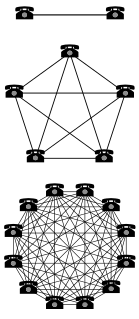 W
WIn economics, a network effect is the phenomenon by which the value or utility a user derives from a good or service depends on the number of users of compatible products. Network effects are typically positive, resulting in a given user deriving more value from a product as other users join the same network. The adoption of a product by an additional user can be broken into two effects: an increase in the value to all other users and also the enhancement of other non-users motivation for using the product.
 W
WPassenger load factor, or load factor, measures the capacity utilization of public transport services like airlines, passenger railways, and intercity bus services. It is generally used to assess how efficiently a transport provider fills seats and generates fare revenue.
 W
WPeak car is a hypothesis that motor vehicle distance traveled per capita, predominantly by private car, has peaked and will now fall in a sustained manner. The theory was developed as an alternative to the prevailing market saturation model, which suggested that car use would saturate and then remain reasonably constant, or to GDP-based theories which predict that traffic will increase again as the economy improves, linking recent traffic reductions to the Great Recession of 2008.
 W
WThe Rebecca Riots took place between 1839 and 1843 in West and Mid Wales. They were a series of protests undertaken by local farmers and agricultural workers in response to unfair taxation. The rioters, often men dressed as women, took their actions against toll-gates, as they were tangible representations of high taxes and tolls. The riots ceased prior to 1844 due to several factors, including increased troop levels, a desire by the protestors to avoid violence and the appearance of criminal groups using the guise of the biblical character Rebecca for their own purposes. In 1844 an Act of Parliament to consolidate and amend the laws relating to turnpike trusts in Wales was passed.
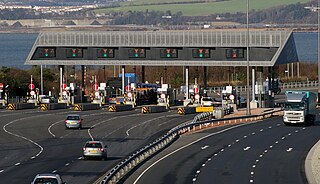 W
WRoad pricing are direct charges levied for the use of roads, including road tolls, distance or time based fees, congestion charges and charges designed to discourage use of certain classes of vehicle, fuel sources or more polluting vehicles. These charges may be used primarily for revenue generation, usually for road infrastructure financing, or as a transportation demand management tool to reduce peak hour travel and the associated traffic congestion or other social and environmental negative externalities associated with road travel such as air pollution, greenhouse gas emissions, visual intrusion, noise and road traffic collisions.
 W
WRolling resistance, sometimes called rolling friction or rolling drag, is the force resisting the motion when a body rolls on a surface. It is mainly caused by non-elastic effects; that is, not all the energy needed for deformation of the wheel, roadbed, etc., is recovered when the pressure is removed. Two forms of this are hysteresis losses, and permanent (plastic) deformation of the object or the surface. Another cause of rolling resistance lies in the slippage between the wheel and the surface, which dissipates energy. Note that only the last of these effects involves friction, therefore the name "rolling friction" is to an extent a misnomer.
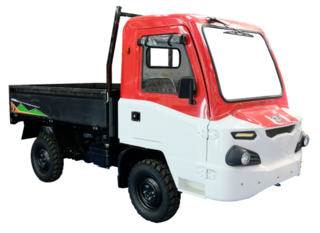 W
WIn Indonesia, rural car or a village car is a grouping of cars that appeared after the second reshuffle of the Joko Widodo's cabinet in July 2016. The reshuffle replaced the Minister of Industry to Airlangga Hartarto. President Jokowi gave the mandate to develop the Small Medium Industry (SMI) project and rural cars. This program was initiated by the Ministry of Industry together with the Indonesian Automotive Institute (IOI). The fixed price for a rural car is around Rp. 60-80 million, cheaper than Kendaraan Bermotor Roda Empat Hemat Energi dan Harga Terjangkau. Rural cars can only be used on offroad roads and village roads outside the toll road. Rural vehicles are designed to facilitate community activities in the area with their function as a means of transporting agricultural and plantation products.
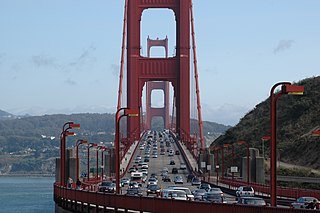 W
WSan Francisco congestion pricing is a proposed traffic congestion user fee for vehicles traveling into the most congested areas of the city of San Francisco at certain periods of peak demand. The charge would be combined with other traffic reduction projects. The proposed congestion pricing charge is part of a mobility and pricing study being carried out by the San Francisco County Transportation Authority (SFCTA) to reduce congestion at and near central locations and to reduce its associated environmental impacts, including cutting greenhouse gas emissions. The funds raised through the charge will be used for public transit improvement projects, and for pedestrian and bike infrastructure and enhancements.
 W
WA trailer skirt or side skirt is a device affixed to the underside of a semi-trailer, for the purpose of reducing aerodynamic drag caused by air turbulence. Trailer skirts have been recognized by the U.S. Environmental Protection Agency's SmartWay Transport Partnership as a verified aerodynamic technology, eligible for funding under the Diesel Emissions Reduction Act.
 W
WA trailer tail, boat tail, or rear fairing is an aerodynamic device intended to improve the fuel economy of semi-trailer trucks. It comprises a set of panels, usually collapsible, which fold out from the rear of the trailer, creating a tapered shape that reduces drag from the low-pressure wake created behind the trailer. Trailer tails are one form of aerodynamic technology verified by the U.S. Environmental Protection Agency's SmartWay Transport Partnership. Trailer tails alone have demonstrated a fuel savings of 1%–5%, and in concert with trailer skirts, 9% improvement has been demonstrated.
 W
WVehicle recycling is the dismantling of vehicles for spare parts. At the end of their useful life, vehicles have value as a source of spare parts and this has created a vehicle dismantling industry. The industry has various names for its business outlets including wrecking yard, auto dismantling yard, car spare parts supplier, and recently, auto or vehicle recycling. Vehicle recycling has always occurred to some degree but in recent years manufacturers have become involved in the process. A car crusher is often used to reduce the size of the scrapped vehicle for transportation to a steel mill.